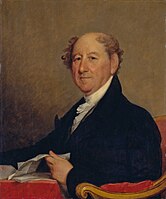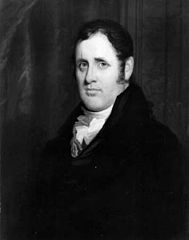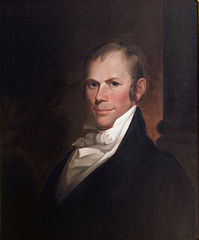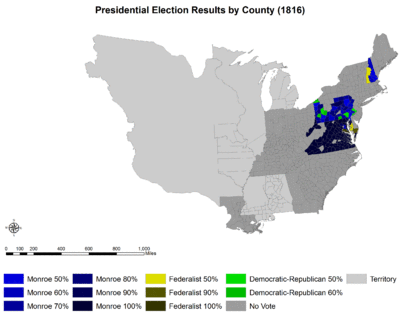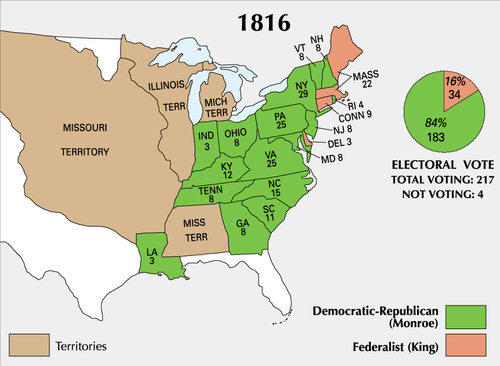
The 1792 United States presidential election was the second quadrennial presidential election. It was held from Friday, November 2, to Wednesday, December 5, 1792. Incumbent President George Washington was elected to a second term by a unanimous vote in the electoral college, while John Adams was re-elected as vice president. Washington was essentially unopposed, but Adams faced a competitive re-election against Governor George Clinton of New York.

The 1796 United States presidential election was the third quadrennial presidential election of the United States. It was held from Friday, November 4 to Wednesday, December 7, 1796. It was the first contested American presidential election, the first presidential election in which political parties played a dominant role, and the only presidential election in which a president and vice president were elected from opposing tickets. Incumbent vice president John Adams of the Federalist Party defeated former secretary of state Thomas Jefferson of the Democratic-Republican Party.

The 1804 United States presidential election was the fifth quadrennial presidential election, held from Friday, November 2, to Wednesday, December 5, 1804. Incumbent Democratic-Republican president Thomas Jefferson defeated Federalist Charles Cotesworth Pinckney of South Carolina. It was the first presidential election conducted following the ratification of the Twelfth Amendment to the United States Constitution, which reformed procedures for electing presidents and vice presidents.

The 1808 United States presidential election was the sixth quadrennial presidential election, held from Friday, November 4, to Wednesday, December 7, 1808. The Democratic-Republican candidate James Madison defeated Federalist candidate Charles Cotesworth Pinckney decisively.
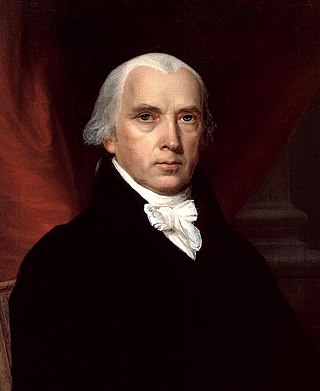
The 1812 United States presidential election was the seventh quadrennial presidential election. It was held from Friday, October 30, 1812, to Wednesday, December 2, 1812. Taking place in the shadow of the War of 1812, incumbent Democratic-Republican President James Madison defeated DeWitt Clinton, the Lieutenant Governor of New York and Mayor of New York City, who drew support from dissident Democratic-Republicans in the North as well as Federalists. It was the first presidential election to be held during a major war involving the United States.

The 1820 United States presidential election was the ninth quadrennial presidential election. It was held from Wednesday, November 1, to Wednesday, December 6, 1820. Taking place at the height of the Era of Good Feelings, the election saw incumbent Democratic-Republican President James Monroe win re-election without a major opponent. It was the third and the most recent United States presidential election in which a presidential candidate ran effectively unopposed. As of 2024, this is the most recent presidential election where an incumbent president was re-elected who was neither a Democrat nor a Republican, before the Democratic-Republican party split into separate parties.

The 1824 United States presidential election was the tenth quadrennial presidential election. It was held from Tuesday, October 26 to Thursday, December 2, 1824. Andrew Jackson, John Quincy Adams, Henry Clay and William Crawford were the primary contenders for the presidency. The result of the election was inconclusive, as no candidate won a majority of the electoral vote. In the election for vice president, John C. Calhoun was elected with a comfortable majority of the vote. Because none of the candidates for president garnered an electoral vote majority, the U.S. House of Representatives, under the provisions of the Twelfth Amendment, held a contingent election. On February 9, 1825, the House voted to elect John Quincy Adams as president, ultimately giving the election to him.

The 1820 United States presidential election in Connecticut took place between November 1 to December 6, 1820, as part of the 1820 United States presidential election. Voters chose nine representatives, or electors to the Electoral College, who voted for President and Vice President.

The 1820 United States presidential election in New Hampshire took place between November 1 and December 6, 1820, as part of the 1820 United States presidential election.

The 1816 United States presidential election in New Jersey took place between November 1 to December 4, 1816, as part of the 1816 United States presidential election. The state chose eight representatives, or electors to the Electoral College, who voted for President and Vice President.

The 1820 United States presidential election in New Jersey took place between November 1 to December 6, 1820, as part of the 1820 United States presidential election. The state legislature chose eight representatives, or electors to the Electoral College, who voted for President and Vice President.

The 1820 United States presidential election in South Carolina took place between November 1 to December 6, 1820, as part of the 1820 United States presidential election. The state legislature chose 11 representatives, or electors to the Electoral College, who voted for President and Vice President.

The 1820 United States presidential election in Maine took place between November 1 to December 6, 1820, as part of the 1820 United States presidential election. The state's popular vote chose nine representatives, or electors to the Electoral College, who voted for President and Vice President.

The 1812 United States presidential election in Maryland took place on an unknown date in 1812, as part of the 1812 presidential election. Voters chose eleven representatives, or electors to the Electoral College, who voted for President and Vice President.

The 1820 United States presidential election in Maryland took place on an unknown date in 1820, as part of the 1820 presidential election. Voters chose eleven representatives, or electors to the Electoral College, who voted for President and Vice President.

The 1816 United States presidential election in New Hampshire took place between 1 November and 4 December 1816, as part of the 1816 United States presidential election. Voters chose eight representatives, or electors to the Electoral College, who voted for President and Vice President.

The 1816 United States presidential election in Kentucky took place between 1 November and 4 December 1816, as part of the 1816 United States presidential election. Voters chose twelve representatives, or electors to the Electoral College, who voted for President and Vice President.


